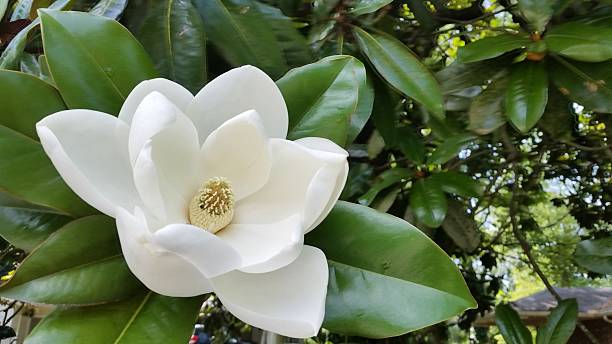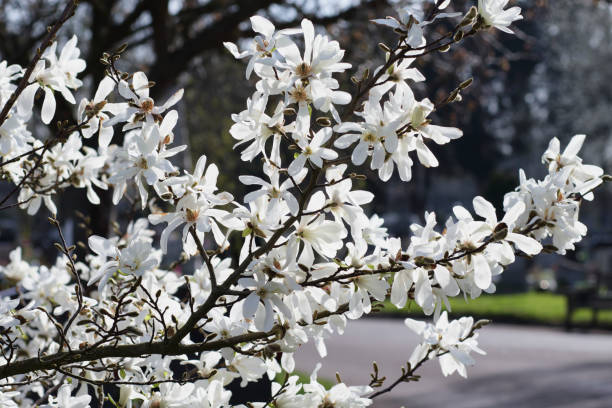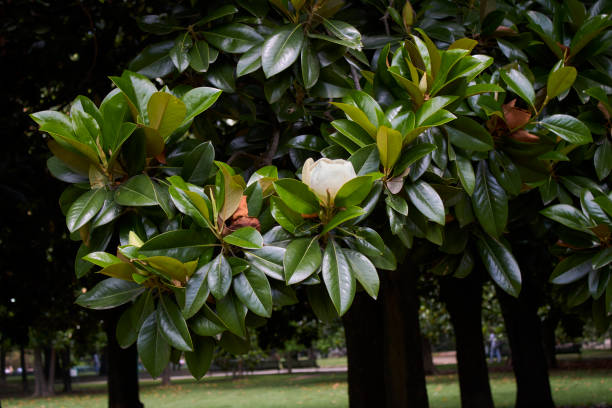Do Magnolia Trees Lose Their Leaves?
Other Magnolia varieties are deciduous. So, it’s normal to drop their leaves as the season changes. All year long, they shed their old leaves. Magnolia leaves that are more than a year old turn yellow and fall to the ground as part of their natural growth cycle. The yellowing of magnolia leaves is caused by drought stress, caused by a lack of water. The roots of trees can be drowned by too much water or by soil that does not drain well.
In the year, evergreen magnolias occasionally lose their leaves. They shed many leaves in April and May as they prepare for flowering and new growth.

Table of Contents
Dropping Leaves in General
As part of their natural life cycle, evergreen plants and trees shed their older leaves and needles, making the term “evergreen” a misnomer. During droughts, healthy trees can lose up to 10% of their leaves, which helps the tree conserve moisture through transpiration or the “breathing” process in a plant’s leaves. Leaves and needles can fall from trees due to various environmental factors, including drought, nitrogen deficiency, pollution, and more.
Southern magnolias start to grow again in the spring, losing their old leaves. Leaves that appear to be old and worn out suddenly turn yellow, and those are the ones to be discarded. They also don’t fall at once but rather gradually. Each leaf is up to ten inches long and is very tough, taking a long time to decompose. The season’s new growth will be visible on the tips of the branches, where the leaves will remain glossy and green.
Winter Drop
As with most deciduous trees, the deciduous magnolia loses its leaves in the fall and winter. During the season, their leaves fall off to aid the tree in surviving the winter. During the autumn and winter, trees lose a significant amount of water. As a result, the primary objective of trees shedding their leaves in the winter is to save energy and water.
The hormones of the magnolia tree begin a process of absorbing all of the leaf moisture and storing it in the tree’s branches and trunk as cold weather approaches. The chlorophyll in the leaves is depleted as the nutrients are absorbed from the leaves. When the leaves turn yellow, red, and orange in the fall, they lose their green color due to the lack of sunlight.
There is a lot of energy required by Magnolia trees in the spring months, which is why they drop so many leaves in the winter. Once the flowering process is complete, magnolia trees will begin to produce new leaves, so if you notice that many leaves have fallen from your tree, don’t worry.
However, if the tree loses all or most of its leaves, you may want to check its health. The soil around the tree could use a little extra protection from compacting during this time, so it’s a good idea to add some mulch (pine bark or pine straw is fine). There are severe consequences if magnolia tree roots can’t get the oxygen they need because of compacted magnolia soil. Additionally, mulching can help to keep weeds under control.

Do Magnolia Leaves Re-Grow?
The magnolia tree’s leaves will return when the blooming season ends. When the tree begins to bloom again in the spring, they usually grow back.
If the leaves on your tree aren’t returning, it’s a sign that it’s stressed out and in need of some tender loving care. It’s also possible that your tree is suffering from a serious health problem if you notice that the leaves on your tree are getting smaller and smaller over time.
What Is The Best Way To Maintain A Healthy Magnolia Tree?
There are a few key considerations when it comes to magnolia tree maintenance. They ensure that the tree receives adequate sunlight, water, and soil and prevent stress on the tree. Fertilizer usage should be kept to a minimum as well. Let’s take a closer look at each of these factors.
Watering
Avoid overwatering your magnolia tree, as wet or soggy soil can be problematic. Generally speaking, they prefer well-drained soil, but some varieties are better able to withstand droughts than others.
Rather than watering your magnolia tree in the late evening or early morning hours, set your irrigation system’s timer for the early morning hours. Fungus growth, root rot, and other plant diseases can be thwarted in this way. Check the soil moisture level frequently after the first planting to ensure that the irrigation does not overwater or underwater the tree.
Sunlight
When planting a magnolia tree in your garden, ensure it has access to both full sunlight and light shade. In the evening, the tree is shielded from the sweltering afternoon sun. When it comes to magnolia tree care, sunlight is crucial. Nearly all trees require sufficient light for them to thrive and flower properly. The growth of healthy plants means that the nutrients in their leaves will get absorbed by their root system or through the stems they produce, called aerial roots or feeders. These plants need at least four hours of direct sunlight each day.
Soil
Several magnolia varieties prefer soil with a pH of between 5 and 6.5. Watering is necessary regularly, though some varieties can withstand more dry conditions than others. Many magnolia trees may lose their leaves early if there’s a severe drought.
Fertilizer
To get the best results, fertilize your deciduous magnolia tree in the late fall months after the leaves have fallen for the season. If you have an evergreen magnolia tree, it’s best to fertilize it before the temperature outside drops below 40 degrees Fahrenheit in the winter. Fertilize the tree in early spring before it grows to ensure a healthy and productive season.
When applying fertilizer to a magnolia tree, use caution because the tree’s sensitive roots can easily be burned, especially if the fertilizer is based on sodium chloride. The most common symptom of fertilizer “leaf burn” is the appearance of burnt or brown edges on the leaves. If you accidentally damage your plant with the fertilizer, you will need to flush the roots entirely with spring water and monitor the plant for the next few months to determine the cause of the damage. If your magnolia tree grows slowly or appears to be in poor health, you may need to fertilize it occasionally.
Depending on the variety, the recommended NPK (Nitrogen-Phosphorus-Potassium) ratio for magnolia fertilizer varies from 20-5-10 to 12-4-8. The most important nutrient for magnolia varieties is nitrogen. If you want your magnolia tree to keep growing and producing healthy leaves, you should use a slow-release certified fertilizer.

Don’t Stress Out Your Magnolia Tree
Generally speaking, magnolias prefer soil that is well-drained and contains some mulch. During the summer or any dry periods of the year, make sure to keep the soil around your tree moist. You’ll be able to tell if the tree is stressed by being submerged because its leaves will turn yellow and wither and, in extreme cases, drop.
“Finger tests” are a great way of determining if your tree’s soil is moist enough to support its growth. The tree is ready to be planted if you can stick your finger into the soil, and it’s moist. It’s important that the soil never feels dry or crumbly.
